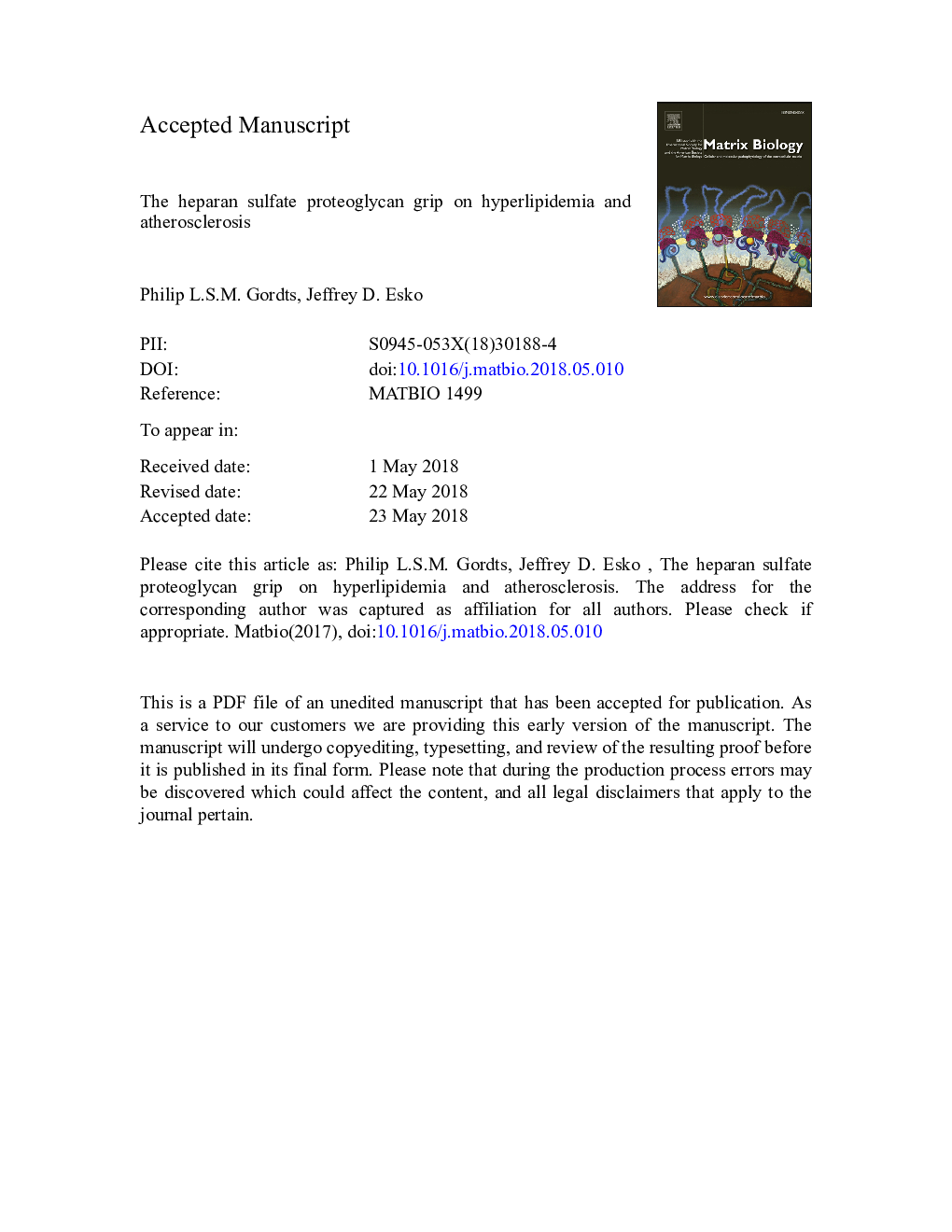| Article ID | Journal | Published Year | Pages | File Type |
|---|---|---|---|---|
| 10157705 | Matrix Biology | 2018 | 65 Pages |
Abstract
Heparan sulfate proteoglycans are found at the cell surface and in the extracellular matrix, where they interact with a plethora of proteins involved in lipid homeostasis and inflammation. Over the last decade, new insights have emerged regarding the mechanism and biological significance of these interactions in the context of cardiovascular disease. The majority of cardiovascular disease-related deaths are caused by complications of atherosclerosis, a disease that results in narrowing of the arterial lumen, thereby reducing blood flow to critical levels in vital organs, such as the heart and brain. Here, we discuss novel insights into how heparan sulfate proteoglycans modulate risk factors such as hyperlipidemia and inflammation that drive the initiation and progression of atherosclerotic plaques to their clinical critical endpoint.
Keywords
LDLRsPLA2LRP1ADAM17SyndecanLPLHSPGVLDLACATTRLSDCPCSK9GPIHBP1IDLHDLHSPG2Flot1acyl-CoA:cholesterol acyltransferasehigh-density lipoproteinLp(a)apoapolipoproteinSecretory phospholipase A2interferonIFNinterleukinA disintegrin and metalloproteinase 17neutrophil extracellular trapNETSulfataseLipoprotein lipaseLipoprotein(a)Low-density lipoproteinLDLvery low-density lipoproteinsHeparan sulfateHeparan sulfate proteoglycanperlecanlow-density lipoprotein receptor-related protein 1Proprotein convertase subtilisin/kexin type 9collagen XVIIIsulfLow-density lipoprotein receptorScavenger receptor
Related Topics
Life Sciences
Biochemistry, Genetics and Molecular Biology
Cancer Research
Authors
Philip L.S.M. Gordts, Jeffrey D. Esko,
